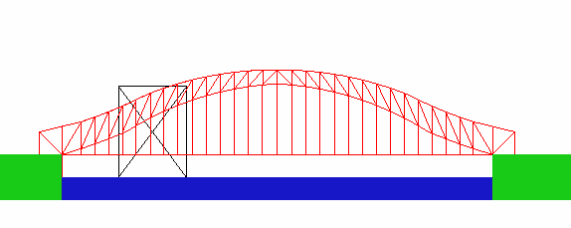David A. Monroy-Berganza
Form & Function
Expression of Form & Function
Form follows function this is a principle of architectural design most commonly associated with late 19th and early 20th-century architecture coined by Architect Louis Sullivan. In the project, we experiment with the relationship between Form & Function to further understand this concept and how they relate to one another.
Span Prototypes






Movement Analogies
The purpose of this assignment was to find objects with movements more complex than a single hinge. This is what was used as a base to achieve the function of creating an opening for a bridge that allows an object with a size of 30'W x40'L to pass.









3x3 Combination Table

Preliminary Designs



Here you can see the initial bridge design, in order to complete the function, I change the original shape of the bridge to accommodate the space being used to pass through it, as well as combing one of the movement analogies on the left-sided to move the roadbed.
This idea was furthered by moving the movement to the top side of the bridge in order to move the roadbed up into the bridge, as well as to create a structure to house the mechanical parts.
When I reached a point where I was satisfied with the mechanisms as well as the form, I went back and polished the structural beams of the bridge as well as polishing the structure for the housing, and adding rollers to move the mechanical parts.



Final 2D & 3D
Designs
Final 2D Design

2D Elevation Closed

2D Elevation Opened

2D Bridge Transformation

3D Bridge Transformation

2D Mechanical Movement Elevation
3D Movement Renders





3D Render

Final Design
